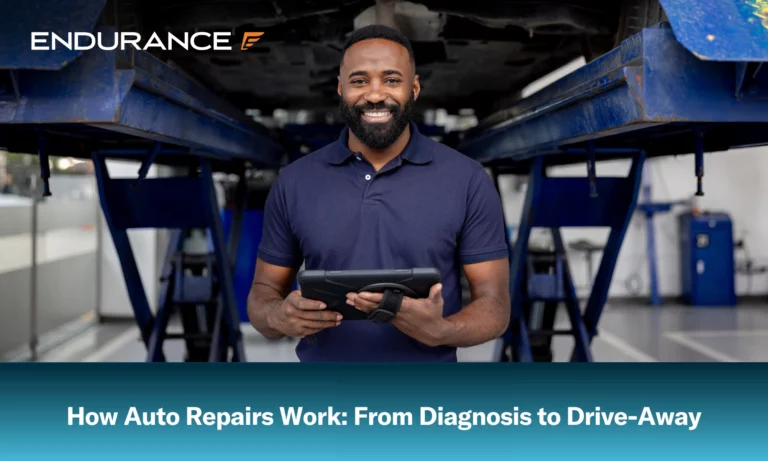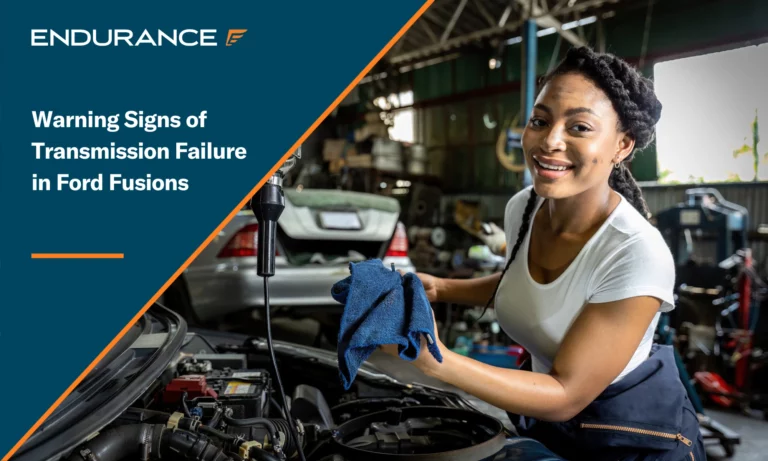The Impact of Seasonal Changes on Car Wear and Tear

With most states around the country getting colder, it’s worth reminding yourself how to prepare your vehicle for the different seasons. Weather conditions play a major role in how a vehicle operates, and without the proper preparation, you may find your vehicle not responding how you’d like.
Learn everything you need to know about the impact of seasonal changes on your vehicle’s general wear and tear.
Winter: The Cold’s Effects on Vehicles
Starting with the end and beginning of the year, wintertime takes a great toll on your vehicle. Given this, car maintenance during winter is incredibly important, as the cold weather can harm your car’s operational capabilities. To that end, focus on the following three effects above all else:
Freezing temperatures and battery life
Unbeknownst to most drivers, cold temperatures can impact a vehicle’s battery life. While a fully charged battery is less susceptible to this, your vehicle’s battery is likely not full. Cold weather causes condensation within car batteries, which can lead to corrosion and, thus, a shorter battery life.
In extreme cases, your battery may even short circuit due to this, so you should always check your battery life before going into winter and even consider unplugging the battery from a vehicle that won’t be used.
Effects on tire pressure and traction
Cold weather can reduce tire pressure by as much as 1 PSI every 10 degrees when the temperature drops. If you live in a colder state, take a look at your tire pressure in the morning when you go outside and then later in the day when the temperature rises. You will likely notice a distinct difference, so being mindful of your baseline tire pressure during colder months is important.
Additionally, cooler temperatures significantly impact tire traction due to slicker roads caused by ice or rain. Adding winter tires to your vehicle can help, but it’s also important to be sure your treads are not too low before leaving the house.
Salt and undercarriage corrosion
In colder states, salt is added to roadways to help prevent ice from forming, thus improving the traction vehicles have as they move down the road. Unfortunately, this salt can also trigger corrosion over time on your vehicle’s undercarriage as it flies up when your vehicle drives over it. Be aware of this fact and inspect your vehicle’s undercarriage regularly to ensure no salt is trapped.
Spring: The Thaw and Rebirth
Many people love spring, given that the weather finally starts to warm up from the frigid temperatures of winter. However, this doesn’t mean that there are no longer dangers to your vehicle on the road. In particular, you should keep an eye out for the following:
The impact of rain and flooding on brakes
Spring comes with warmer weather and sunlight, but it also comes with showers in many states nationwide. Wet roads mean drivers are putting greater pressure on their brakes, which can become an issue if those brakes are already run down. While you can inspect your brake pads yourself, don’t forget to listen to the signs that vehicle maintenance on your brakes may be necessary, such as squeaking, grinding, or other unpleasant noises when you use the brakes.
Potholes and suspension wear
Road conditions during the winter often deteriorate, leaving potholes and other problems on the road in the spring. As your vehicle drives over these potholes, you will undoubtedly feel a bump and brush it off. However, repeated pothole impacts can severely impact a vehicle’s suspension system over time and create an uncomfortable ride on the road, making your vehicle more difficult to control.
The start of pollen: Air filters and ventilation
For those with seasonal allergies, spring may not be your favorite time of the year. While you may believe your car offers a reprieve from the pollen floating around, you will quickly learn if there is an issue with your air filtration system should you start having allergy symptoms.
Summer: High Temperatures and Long Drives
For many worldwide, summer is a relaxing time of the year featuring warm weather and worryless days. As with the other seasons, though, the warm weather can be deceptive. While it may feel nice outside, there are distinct problems this weather can cause for your vehicle, with the most notable of those being the following:
Overheating and radiator stress
Believe it or not, the average vehicle engine sits at an operating temperature between 195 and 220 degrees when working properly. Anything warmer via overheating can quickly become dangerous for the engine. Luckily, your vehicle’s radiator and cooling system keep it within this Goldilocks range. When the weather gets warm outside, though, a greater strain on this system will occur, and if there is even the slightest mechanical problem on top of this, you may be facing an overheating vehicle.
Sun damage: Paint, interior, and dashboard
An often overlooked vehicular issue that occurs during the summer months is interior damage due to the sun beating down. To keep the interior dashboard and general interior in good condition, look into sun reflectors for your vehicle or aim to keep your car parked indoors during the summer months.
Tire blowouts and increased pressure
If you remember from the discussion of winter months, tire pressure can be expected to drop by 1 PSI for every 10 degrees the weather drops. On the other hand, tire pressure will increase 1-2 PSI for every 10 degrees the weather rises as well. Overinflating your tires can lead to a greater risk of tire blowout during these months of extreme temperatures.
Autumn: Falling Leaves and Temperature Fluctuations
Last but certainly not least, autumn is a gorgeous time of year when the trees change colors, and the blistering heat from summer finally begins to fade. Fortunately, autumn is also the time of year that typically has the least dangers for your vehicle, but that doesn’t mean there aren’t any present:
Leaf blockage in vents and undercarriage
The trees’ changing colors may be beautiful, but the leaves collecting on roadways can result in problems. Specifically, these leaves can block crucial vents under your vehicle and collect against the undercarriage, resulting in potential mechanical issues. Aim to clean off this undercarriage as much as possible during the fall.
Wet leaves and skidding hazards
Building off of the prior point, rainfall can be expected to return in autumn in most states. This means that, once again, you must be prepared to use your brakes more, as wet roads and wet leaves will create hazards for cars.
Preparing for the cold once more
Finally, all drivers should take the autumn period to prepare for winter’s imminent road dangers. This is an excellent time to tackle preventative maintenance for your vehicle to ensure that no problems under the hood arise.
5 Car Maintenance Tips for Each Season
 With the common dangers of roadways during the year outlined above, it’s worth looking at a comprehensive bulleted list of key maintenance tasks to perform by the season. Regardless of whether your vehicle is decades old or fresh off the lot, make an effort to complete the following:
With the common dangers of roadways during the year outlined above, it’s worth looking at a comprehensive bulleted list of key maintenance tasks to perform by the season. Regardless of whether your vehicle is decades old or fresh off the lot, make an effort to complete the following:
Winter Car Maintenance
- Swap out regular tires for winter tires if you are in a state with poor road and weather conditions
- Inspect your windshield wiper blades and replace the windshield wiper fluid
- Check the treads on your tires and inspect tire pressure
- Double-check that the defrosters on both your front and rear windshields are operational
- Test the battery level of your vehicle before the weather drops too much
Spring Car Maintenance
- Rotate your tires and have the alignment checked during the months
- Deep clean your headlights and ensure that the bulbs are working properly
- Schedule an engine oil and air filter change
- Clean the inside and outside of your car to get rid of any accumulated dust
- Take off your winter tires if applicable
Summer Car Maintenance
- Ensure your tire pressure is not over the recommended level
- Put summer tires on your vehicle if applicable
- Invest in a sun filter for your windshield
- Top off all fluids within your vehicle
- Test the air conditioning unit before the weather becomes too severe
Autumn Car Maintenance
- Sweep leaves away from your vehicle regularly before leaving for the day
- Add all-weather floor mats to your vehicle to protect it
- Check that the heating system in your vehicle works correctly
- Double-check that the treads on your tires are solid enough to go into winter
- Consider getting a tune-up for your brakes ahead of the colder weather
The Importance of Being Proactive
In addition to the above maintenance tips, all drivers must be proactive by following the recommended maintenance schedule outlined in their owner’s manual. By ensuring each and every component within your vehicle is operating properly, you can greatly reduce the risk of mechanical breakdown. This will keep you safer on the road and save you money in the long run.
Drivers who aren’t proactive, though, may find that smaller issues compound under the hood, which results in serious repairs being necessary, costing tens of thousands of dollars. Take action through preventative maintenance during the course of the year.
Keeping Your Vehicle Protected with Endurance Auto Warranty
The last thing any driver needs is to discover that their vehicle has a mechanical problem that requires the assistance of a professional. Unfortunately, even the best automotive maintenance cannot prevent all issues from occurring under the hood. When a repair is on the horizon due to a mechanical breakdown, a vehicle service contract covering the cost can help.
At Endurance Warranty, you have many customized packages to choose from. The Secure Plus plan offers basic coverage designed for older vehicles, with only the most important components, such as the engine or transmission, being covered. The Supreme and Superior plans are for those seeking more comprehensive coverage, with the former of the two offering near bumper-to-bumper protection.
Regardless of your choice, every warranty package comes with Elite Benefits for a small activation fee, which offers bonus perks such as 24/7 roadside assistance, up to $500 in collision coverage, and key fob replacement. To learn more, contact our award-winning customer service team at (800) 253-8203 to request a FREE quote, or shop online to receive an instant price now.













Larry Witherspoon Jr. is a co-founder and Executive Director of the Automotive Training Center. Larry has held multiple leadership positions in the U. S. Navy and with various Fortune 100 companies. In addition to his business experience, Larry grew up understanding the difficulties all young men face becoming adults especially those that come from challenging circumstances. He has taken those experiences growing up and combined them with his passion for vehicles to start the Automotive Training Center. Read more about Larry.